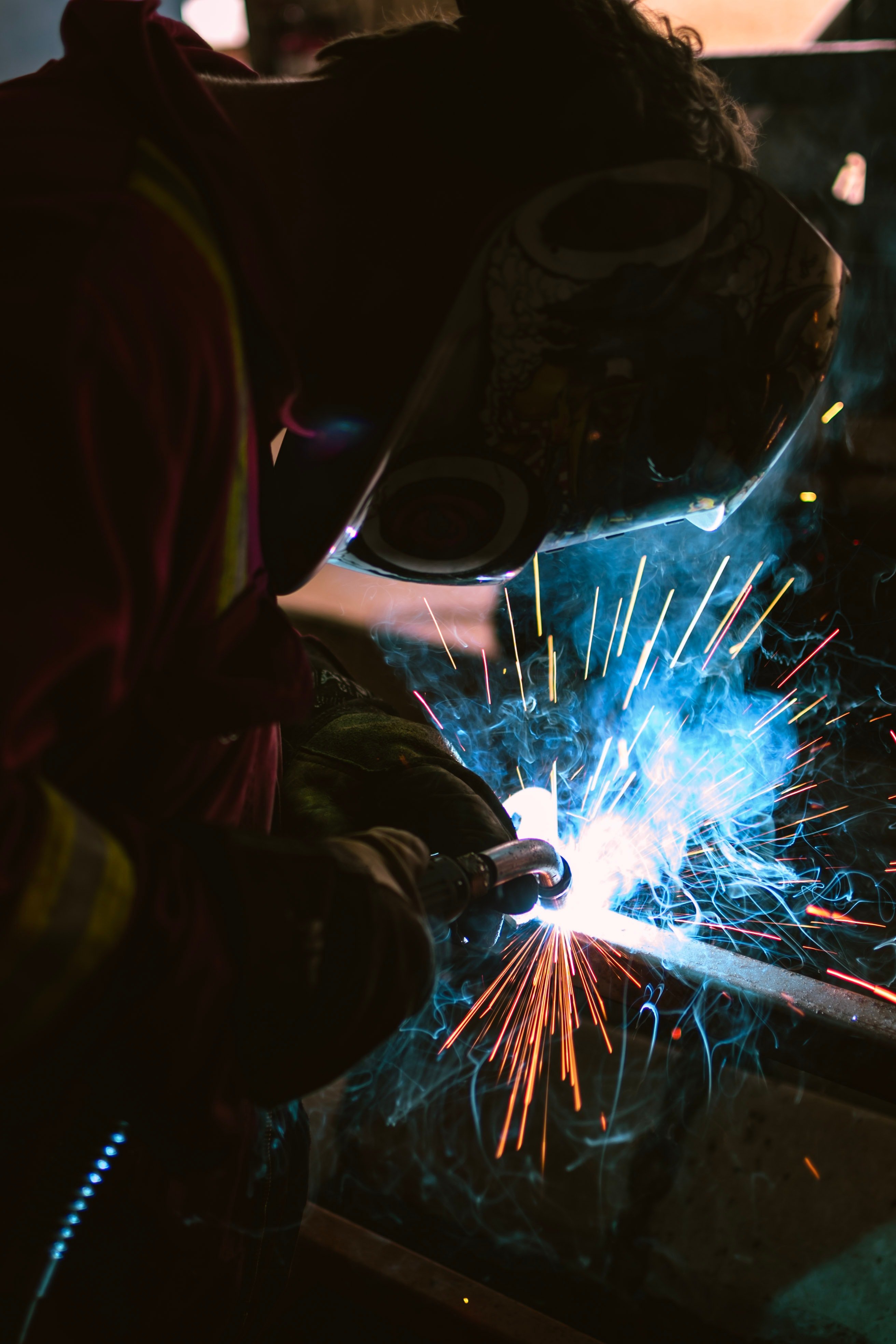Pipelines are the Cleanest, Safest Way to Ship Oil and Gas
Pipelines continue to be the safest and cleanest way to ship the oil and gas that keeps the U.S. economy moving.
Fossil fuels – petroleum, natural gas and coal – accounted for 79 percent of total U.S. primary energy production in 2020 with natural gas (36 percent) and petroleum (32 percent) making up more than two-thirds of production, according to the U.S. Energy Information Administration.
Pipeline, Boat, Truck or Rail: Moving Oil and Gas
There are four main methods of moving oil and gas from the fields and production facilities to market: pipeline, boat, truck, or rail.
Natural gas, colorless and odorless gas which consists mostly of methane, makes up 20 percent of the world’s primary energy in its raw form and 15 percent of the world’s end use energy after processing, according to Energy Education website.
According to Forbes, 100 percent of natural gas is shipped by pipeline.
Crude oil and petroleum products, according to Forbes again, are shipped in the United States via:
- 70 percent by pipeline
- 23 percent by tankers and barges over water
- 4 percent by trucks
- 3 percent by rail
It should be noted that in Canada the pipeline usage is much higher with 97 percent of natural gas, crude oil, and petroleum products moving by pipeline, according to the Canadian Energy Pipeline Association.
Pipelines Move Oil and Gas Safely and Efficiently
The U.S. economy’s reliance on oil and gas is highlighted by the fact that petroleum provided approximately 90 percent of the transportation sector’s energy consumption in 2020.
The task of moving oil and gas around the country efficiently and safely around the clock is handled mainly by 190,000 miles of onshore and shoreline petroleum pipelines and 2.4 million miles of natural gas gathering and distribution pipelines.
“Pipelines are safe, efficient, and because most are buried, largely unseen,” says the American Petroleum Institute.
George Washington University transportation economics professor Diana Furchtgott-Roth argues that there is a reason that pipelines are the chosen transport method: “Pipelines are the primary mode of transportation for crude oil, petroleum products, and natural gas. Transporting oil and natural gas through pipelines results in fewer fatalities, injuries, and environmental damage than road and rail.”
Yet, it is the very safety and environmental factors that have derailed pipeline projects in recent years in North America, which somewhat surprises energy and environment reporter James Conca.
“While many have called for shutdown of pipelines and a moratorium on new pipeline construction, the correct reaction may just be the opposite,” wrote Conca in Forbes. “We really should be replacing old pipelines and building new ones, reducing the stress on each line. Particularly good is to supersize them – build bigger pipelines over old ones.”
Increasing truck transport of oil and gas to compensate for less volume moving through pipelines is not an attractive option for many in the industry.
“Pipelines are lower cost, safer and less damaging than all kinds of motor transport,” wrote Brian Westenhaus in OilPrice.com. “In the end though, it boils down to lives, suffering and safety.”
Oil and Gas Pipeline Safety Statistics Closely Tracked
In the Furchtgott-Roth article published Sept. 20, 2021, she takes a look at pipeline safety which is tracked by the Department of Transportation Pipeline and Hazardous Materials Safety Administration’s (PHMSA) Office of Pipeline Safety.
- Natural gas transmission lines had a low average injury rate for operator personnel and the general public, having an average of only five per year over the past ten years.
- Between 2011 and 2020, there was an average of 2 deaths annually from natural gas pipeline incidents.
- For the past 20 years the number of fatalities from all pipeline transportation is approximately 13 per year, which is lower than the average number of people killed by lightning—49 fatalities per year, according to the National Weather Service.
“We need additional pipelines to get natural gas from the Marcellus Shale in Pennsylvania and the Utica Shale in Ohio to the rest of the country. America’s ability to export gas will enable us to help our friends. Pipelines are safe, and safety matters,” Furchtgott-Roth concludes her article.
Investing in Technology to Make Pipelines Safer
Advances in pipeline inspection technologies, such as magnetic flux leakage (MFL) technology, has helped make the shipment of oil and gas safer.
“When natural gas is in a pipeline, the pipeline stays still and the gas moves away from people, with little risk of accident. New technology shows pipeline operators if there is a pinhole leak in a pipe, and sophisticated pressure gauges can signal if oil pressure is declining,” writes Furchtgott-Roth.
PHMSA in a bid to increase pipeline safety awarded nearly $100 million of grants in September to states, territories, and tribes to help enhance pipeline and hazardous materials safety programs at the community level.
“States and community groups play an important role in addressing the safety challenges associated with pipelines and hazardous materials,” said PHMSA Acting Administrator Tristan Brown. “The grants announced today are essential in supporting the resource needs of states and localities to effectively enforce safety standards, train response personnel, and equip everyday citizens with the necessary tools to protect themselves from transportation related accidents.”
The awards provide over $69 million in grant funding for six different pipeline safety grant programs, including:
- $58 million in Pipeline Safety State Base grants to support state inspection and enforcement of pipeline safety regulations for natural gas and hazardous liquid pipelines.
- $4.8 million in Underground Natural Gas Storage grants to support efforts to inspect and enforce safety requirements, as well as mitigate releases from underground natural gas storage facilities, such as the October 2015 incident involving the Aliso Canyon Storage Facility in Los Angeles County, California.
- $2.1 million in Pipeline Safety Technical Assistance grants to support local community involvement in pipeline safety issues.
- $1.8 million in Competitive Academic Agreement Program awards to spur and utilize university research to advance pipeline safety technologies, innovation, and knowledge dissemination.
- $1.7 million in State Damage Prevention Program grants to support and strengthen states’ efforts in addressing pipeline failures attributed to activities such as excavation damage.
- $1.1 million in One-Call grants to help improve state one-call notification systems and enhance damage prevention education and enforcement efforts.
Pipelines Can Help Reduce Carbon Footprint
When it comes to reducing the carbon footprint, pipelines can play a supportive role, according to Submar, offshore and onshore pipeline exposure remediation provider.
“From carbon emissions to misconceptions about spills, pipelines sometimes receive negative press regarding the environment, but the truth is that pipelines are one of the safest ways to transport the oil and gas we depend on,” says Submar.
Submar argues that pipelines play a role in reducing the carbon footprint by:
- Lower Carbon Emissions: Increased use of natural gas has helped the U.S. lower greenhouse gas emission by 17 percent since 1990 despite gas production rising 37 percent.
- Cut Down on Particulates: Natural gas emits 50 to 60 percent less carbon dioxide in a new natural gas power plant compared to a typical new coal plant.
- Better Than Trucks, Trains and Ships: Pipeline emission in transportation, mainly from compressor stations and methane from small leaks or maintenance activities, is less than emission from truck, train and ship transportation.


